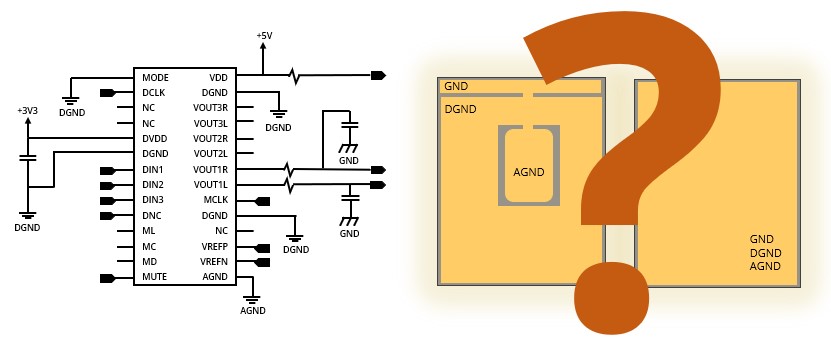EMC Question of the Week: January 16, 2023

If a circuit board has single-ended analog circuits operating at 100 MHz and single-ended digital circuits operating at 100 Mbps, the return currents should almost always be routed on
- the same plane(s)
- the same layer
- different layers
- single-point-connected planes
Answer
The best answer is “a.” At frequencies above 10 MHz, signals routed above (and/or below) a return plane have return currents that are largely constrained to the region of the plane below (and/or above) the trace. If the separation distance between the traces is several times greater than the trace-plane separation, crosstalk due to common-impedance coupling is virtually always negligible. Therefore, there is no good reason to split the return plane into two parts. Even when the traces are routed on different layers and there is more than one return plane, the various return planes should all be well-connected to each other at high frequencies.
At 10 kHz (i.e., low frequencies), the situation is very different, but the answer would often be the same. At low frequencies, the return currents spread out across the plane(s), so the analog and digital return paths are shared. If one circuit's return current was 1 Amp, it could induce as much as 1 millivolt of noise in any other circuits sharing the same return plane (assuming a 1-mΩ plane resistance). Any circuits unable to tolerate that much noise would require their own return conductors (usually traces, not planes). Fortunately, the low frequencies, where currents spread out, are unlikely to be significant radiated emission concerns.
Finally, note that while common-impedance coupling is unlikely to be an issue at 100 MHz, E-field and H-field coupling are still issues that must be considered. Field coupling problems are usually avoided by simply maintaining a distance between traces much greater than their height above the return plane, or by routing traces on opposite sides of the return plane.
Have a comment or question regarding this solution? We'd like to hear from you. Email us at
